|
 |
|
Revo was founded in 1907 by
Frederick Harold Reeves, who lived at Bearnett House
(now a care home) off Stourbridge Road,
Wolverhampton. The business began as The
Cable Accessories Company Limited, at Britannia
Works, Groveland Road, Dudley Port. The site was
alongside the Birmingham Canal and expanded to cover
over sixty acres, that extended into the boroughs of
Dudley and Rowley Regis.
Frederick Reeves went into
partnership with Septimus Vaughan, whose father,
Ernest Vaughan, founded VONO,
the local manufacturer of
mattresses
and bedstead fittings. Revo soon became very
successful and produced a vast range of products,
most of which were designed in-house. Early products
included lighting, radios, loudspeakers, cookers,
switchgear, and fans. By the 1930s the firm became a
household name and the firm's electric street
lighting was widely introduced throughout the
country. |
|
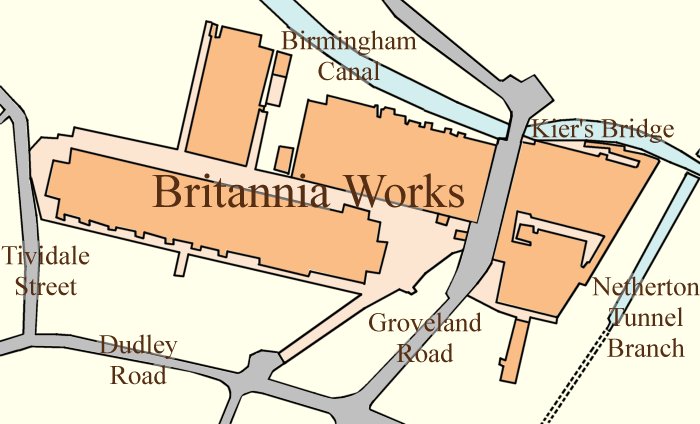
The site of the factory in
the late 1930s. |
|
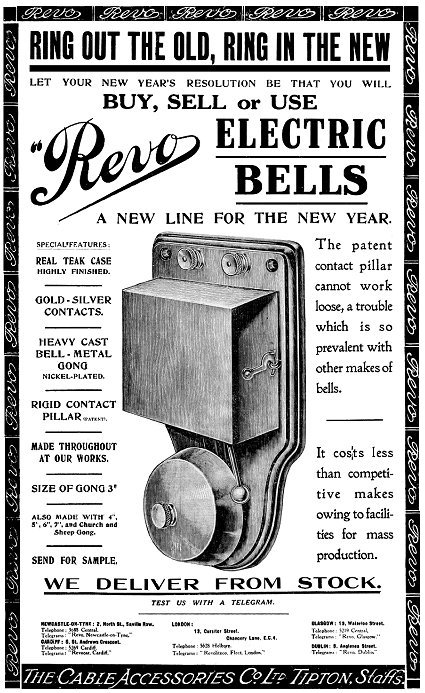
An advert from
1922. |
In 1922 The Cable Accessories
Company Limited had a capital £100,000.
The Company Directors were Ernest
Vaughan, Chairman; Frederick Harold
Reeves, Managing Director; Arnold
Vaughan; Alfred Vaughan; and Albert E.
Felton. There were 700 employees.
At that time the firm produced
electric light fittings, electric irons,
fires, fans, fuses and switches, bells,
hot plates, kettles, sparking plugs, and
enamelled reflectors. |
|

An image of the factory
from October, 1930. |
| In the 1920s, when broadcasting started in
the UK, the company produced a range a
radios. On
Tuesday 14th November, 1922, the first BBC
station 2LO started broadcasting in the Medium
Waveband, from the roof of Selfridges store in
Oxford Street, London. The next day 5IT started
broadcasting in Birmingham, and 2ZY went on the
air in Manchester. 2LO had an audience of
about 18,000. Many early radios, particularly
valve receivers were expensive and so for much
of the population, were unaffordable. Revo produced a range
of simple, cheap crystal sets that cost from a
few shillings to a few pounds. |
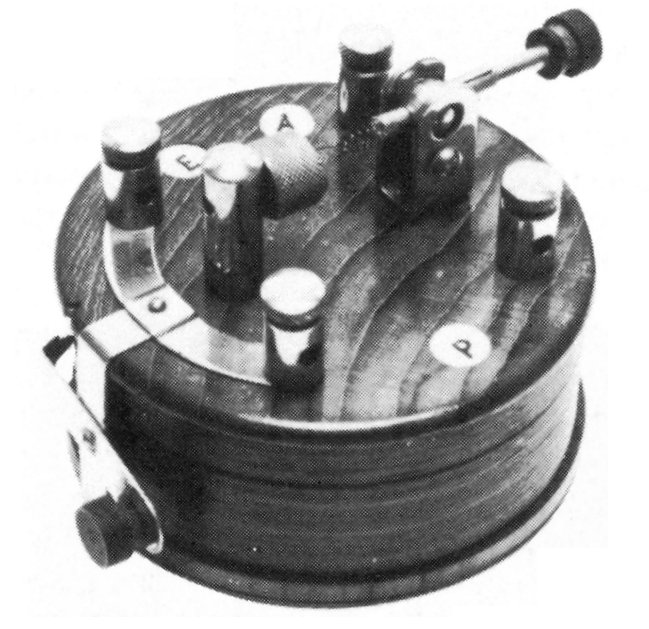
An extremely cheap Medium Wave
receiver, the Revo 'Little Gem' that sold for just 5s.6d.
|

The Medium Wave
'Revophone' crystal set from 1923 that sold for
£2.10s.0d. plus a 7s.6d. BBC royalty fee. |
|
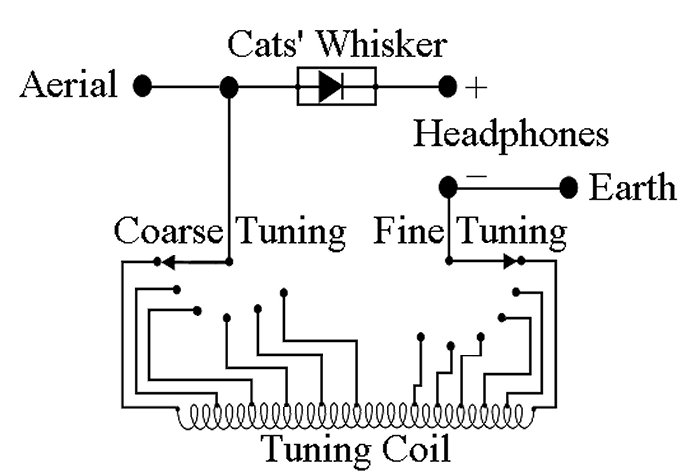
The circuit diagram of the
receiver above. |
|

The instructions for the
receiver. |
|
The
instructions read as follows:
Fixing. Erect the
aerial as shown above seeing that the down lead
is a foot away from the building. A hole should
be bored through the window frame to receive the
window terminal. Use the flexible insulated wire to
connect from the window terminal to terminal
marked “A” on the receiver, and the insulated
single wire should be used from terminal marked
“E” to the nearest water pipe, an adjustable
clip is provided for this purpose.
Using. The
headphones should be connected to terminals marked “P” and
both tuning switches placed in the central
position. Now operate the adjusting knob on the
crystal detector so that the spring bears gently
on the crystal. If broadcasting is in progress a
sound will be heard in the phones on turning the
coarse tuning switch to the right or left, the
final adjustment being made on the fine tuning
switch; the best position for the switch arms
can easily be found by trial. To obtain the best
results a little practice is necessary in
adjusting the detector spring.
Several headphones can be
used if desired, but they should be of the same
kind to give the best results. If any difficulty
is experienced with this set, the manufacturers
will give advice free of charge on request.
|
|
|
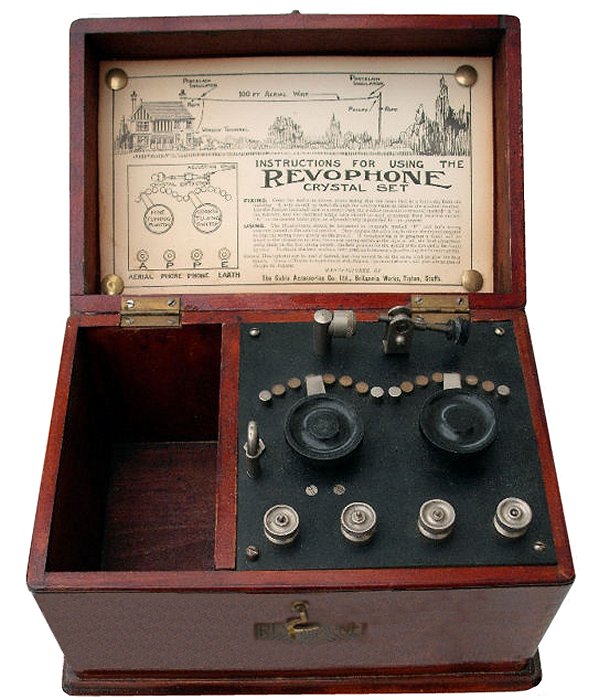
When The Light Programme
(Radio 4) started broadcasting on 29th July
1945, on 1,500 metres, in the Long Wave band, Revo produced a dual band version of the 'Revophone'
using a plug-in Long Wave coil. |
|
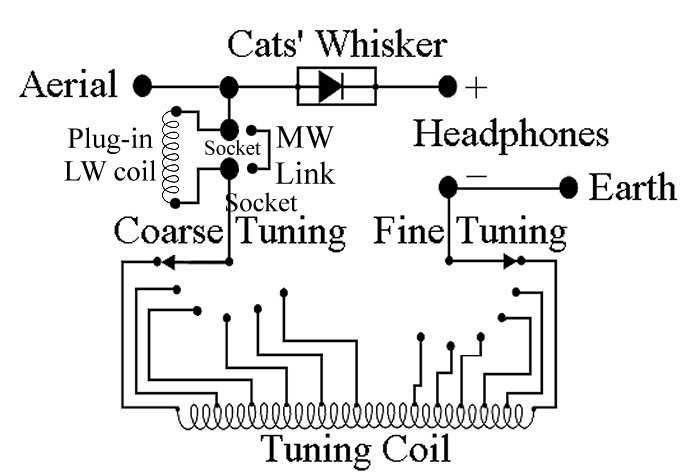
A circuit diagram of the
dual-band 'Revophone'. |
|
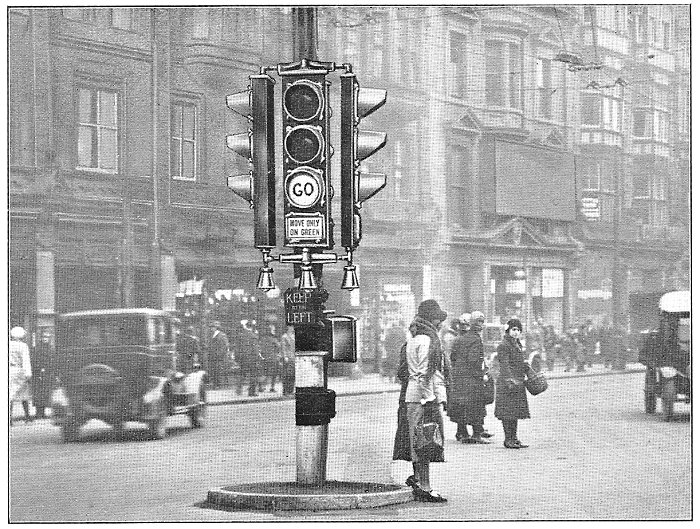
Revo traffic
lights in Princes Square, Wolverhampton,
in the 1930s.
|
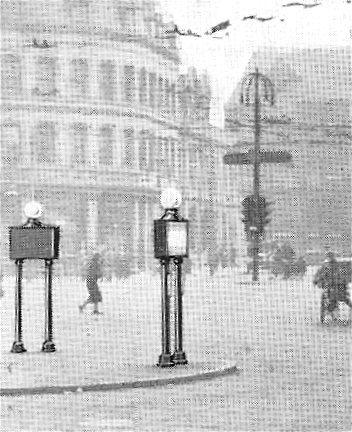
Revo
illuminated warning signs, installed
in Princes Square, Wolverhampton, in
the 1930s. |
Revo traffic lights were installed in
many towns and cities throughout the UK
in the late 1920s and 1930s, including:
Battersea, Belfast, Birmingham, Bristol,
Bradford, Burnley, Burton-on-Trent,
Canterbury, Carlisle, Coventry, Dover,
Dundee, Edinburgh, Evesham, Exmouth,
Fenny Stratford, Fulham, Great Yarmouth, Haslingden, Horwich, Ilford, Kenilworth,
Lambeth, London, Lytham St Annes,
Manchester, North Shields, Nuneaton,
Paignton, Plymouth, Rutherglen,
Sheffield, Stoke-on-Trent,
Stratford-upon-Avon, Tipton, Totnes,
Torquay, Teignmouth, Wakefield, Warwick,
and Wolverhampton. |
 |
By October
1930 the firm had become the Revo Electric
Company Limited, which became a public
company in 1936.
The firm's
electric cookers, which were very
successful, were known as 'Monarch' cookers.
In 1932
the firm exhibited electric street lights,
street light fittings, lamp standards, and a
set of traffic lights, at the Blackpool
exhibition, and in 1936 exhibited a range of
sodium vapour and mercury vapour discharge
lanterns at the Association of Public
Lighting Engineers' annual conference at
Folkestone.
Revo also
exhibited at the association's conferences
in 1938 and 1939 including silver mirrored,
prismatic, and lenticular glass panels.
In 1937
Revo exhibited a range of products at the
British Industries Fair at Birmingham. The
display included Boiling Plates, Brackets
and Fittings, Concrete Standards, Electric
Cookers, Enamelled Signs, Fans, Fires, Guard
Posts, Industrial Lighting Fittings,
Irons, Kettles, Street Lighting, Standards,
Switchgear, Traffic Signs, Tubular and Panel
Heaters, and Wash Boilers.
During the
Second World War the company received many
government contracts for war work. Vast
quantities of munitions were produced
including five million 2 inch mortar bombs,
three million grenades, two million
incendiary and smoke bombs, a large number
of 4½ inch, 60lbs, stream line shells, high
explosive aero bombs of 500lbs, and
1,000lbs, and many pieces of electrical
equipment and electrical fittings. The
munitions contracts were worth several
million pounds. |
|
In 1943 many
thousands of plain bearings for the
Meteor engine and air-coolers for
Lancaster bombers were produced. Revo
also supplied aircraft landing lights
for aerodromes, gas-tight fittings, and
took a large part in the development of
fluorescent lighting. Many Revo products
were also used in the ships and
dockyards of the Royal Navy and cookers
were produced for the government’s
emergency housing scheme. |
|

An advert from 1948. |
|
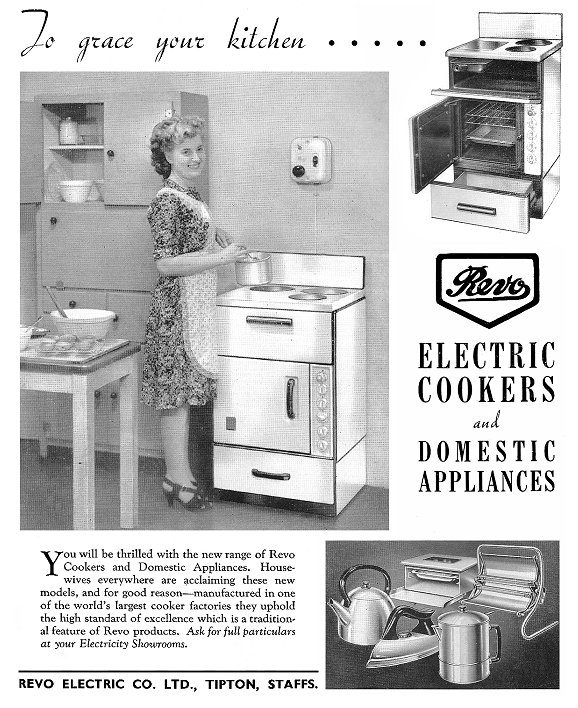
An advert from the 1950s. |
|
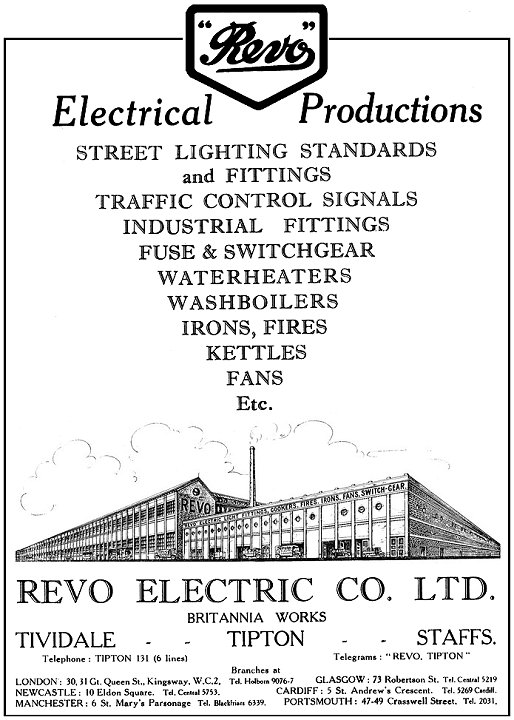
An advert from October,
1930. |
|

A view of the factory from
the 1920s. |
|
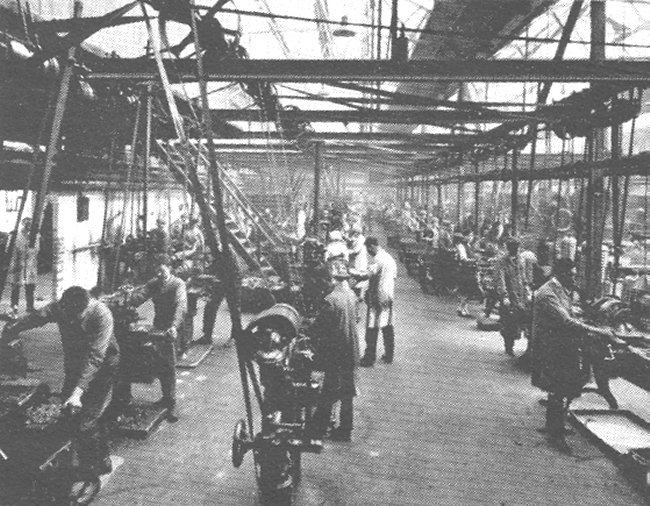
The Main Machine
Bay. |
| The Fittings
Assembly Department. |
 |
| Revo became one of the largest local
employers, with a staff of over 3,000 by the
late 1950s. The many departments included
ferrous and non-ferrous foundries, a ceramics
department, a concrete department, a press shop,
machine shops, assembly shops, a vitreous
enamelling department, a woodwork department, a
cooker department, a lighting department, a
wire-working department, a switchgear
department, and an electric fire department.
There were first class working conditions in the
factory with excellent medical and welfare
facilities at hand. Revo had a large sports
ground alongside New Birmingham Road, the
entrance being in Walford Street. There was a
pavilion, tennis courts, a bowling green and a
football ground, which was illuminated by Revo
floodlights that were installed in the early
1950s. The sports facilities were very popular
and well used by the staff. Revo also had a
successful brass band.
Development work continued during the Second
World War that led to the development of
lighting using low pressure sodium and gas
filled tungsten lamps, that were displayed at
the 1945 conference of the Association of Public
Lighting Engineers, and in 1946 a patent was
taken out for improvements in double pole
electric switch mechanisms. |
| In 1956 Revo was taken over by Duport and
formed one third of Duport's holdings. The other
two thirds were VONO and Duport Foundries
Limited. At the time, Revo was one of the three
main UK manufacturers of street lights, the
other two being GEC and AEI. In 1967 Duport sold the
goodwill, patents, and trademarks of Revo to
English Electric. The street lighting division was sold to Tubes
Limited, who sold and developed the range under
the 'Relite' name.
This was a sad end to such an important local
company, who had also been a significant local
employer. |
|
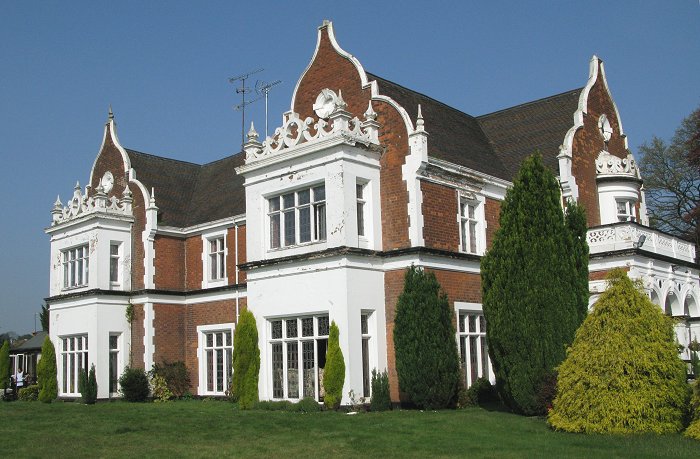
Bearnett House, Frederick
Harold Reeves' home. |

The grave of Frederick
Harold Reeves and his second wife Ida, in St. Bart's
Graveyard, Penn, Wolverhampton. Ida, Maureen,
died on 19th February, 1952 at the age of 58 and
Frederick died on 15th March, 1953 at the age of
75. |

The grave of Frederick
Harold Reeves' first wife Lillian, and daughter
Freda in St.
Bart's Graveyard, Penn, Wolverhampton.
Lillian, Getrude, died on 22nd January, 1919 at the age of
36. Freda died on 21st November, 1955 at the age of 49.
|
 |
Return to
the
previous page |
|